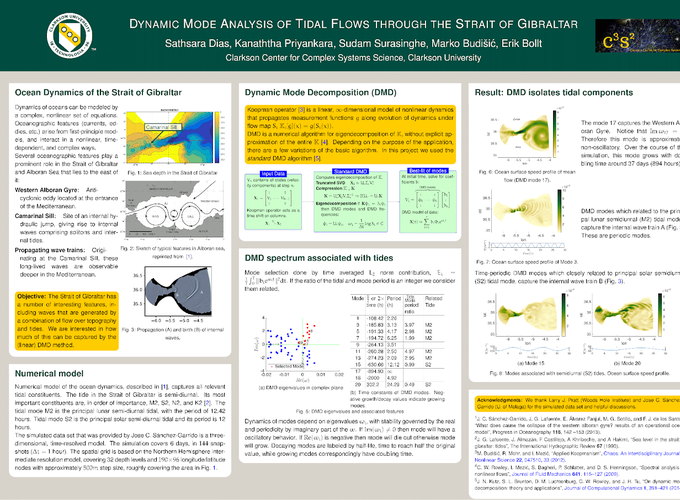

Recent advances in dynamical systems made it possible to analyze complex systems in data-driven, equation free methods. In particular, our work uses the Dynamic Mode Decomposition (DMD), a numerical method based on the linear Koopman operator that identifies spatial and temporal patterns (modes) from simulated or measured snapshots of nonlinear dynamics. As DMD is equation-free, it can analyze nonlinear models from physical sciences, engineering, videography, economics, etc. We applied DMD to identify flow constituents in a three-dimensional simulation of tidal flows through the Strait of Gibraltar over a six-day period. DMD managed to isolate well-known tidal patterns, such as the Western Alboran Gyre, the twelve-hour lunar tide cycle (M2), and the tidal bore discharging Atlantic waters into the Mediterranean. Additionally, the DMD modes were able to clarify the structure of a recurrent flow pattern occurring as the water passes the Camarinal Sill just to the Atlantic side of Gibraltar.